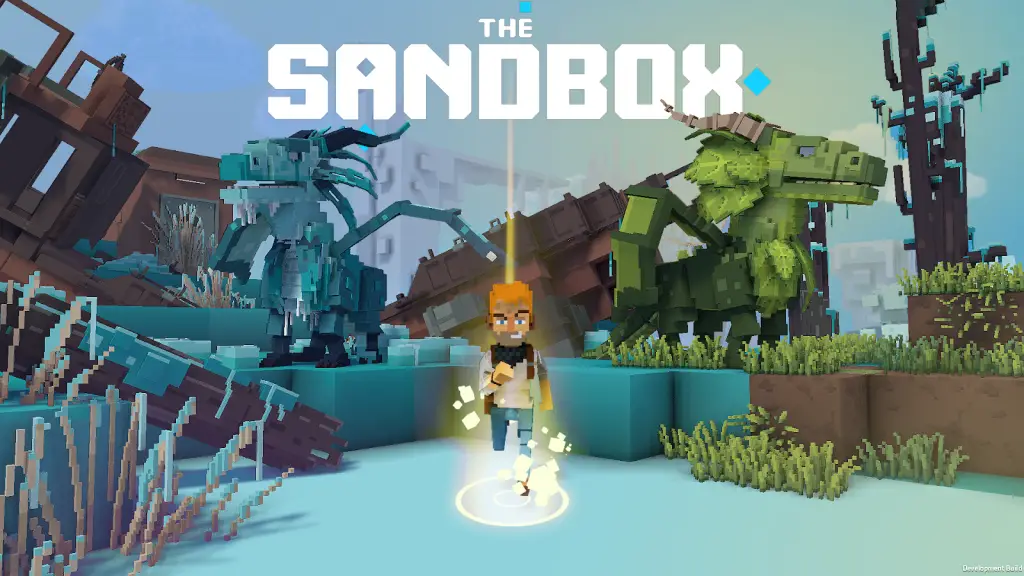In the ever-evolving landscape of cryptocurrency and blockchain technology, The Sandbox stands out as a pioneering project that combines elements of virtual worlds, blockchain, and gaming to create a dynamic and immersive experience for users. With its unique blend of creativity, decentralized ownership, and financial incentives, The Sandbox is redefining how we perceive digital assets, virtual real estate, and the future of entertainment. In this comprehensive article, we will delve into what The Sandbox is, its core features, its role in the crypto world, and the potential it holds for the future.
What is The Sandbox?
The Sandbox is a decentralized virtual world where players can create, own, and monetize their gaming experiences and assets using blockchain technology. It is developed by Pixowl, a subsidiary of Animoca Brands, and aims to provide a platform that empowers creators, gamers, and investors alike. At its core, The Sandbox is a metaverse, a term often used to describe digital universes where users can interact, create, and engage with one another in a shared online space.
Key Features of The Sandbox
User-Generated Content: One of the defining features of The Sandbox is its focus on user-generated content. Users, often referred to as “Creators,” can design, build, and customize their virtual experiences within the platform. This includes creating 3D assets, characters, landscapes, and games using The Sandbox’s proprietary game-making software known as the VoxEdit. This emphasis on user creativity is reminiscent of popular games like Minecraft, but with a blockchain twist.
Blockchain Integration: The Sandbox leverages blockchain technology, primarily Ethereum, to underpin its platform. This integration enables true ownership of digital assets, making them provably scarce and transferable. Each in-game asset, or “LAND,” is represented as a non-fungible token (NFT), ensuring that players have full control and ownership over their creations. This provides a novel way for creators to monetize their work through NFT sales, rentals, or in-game transactions.
LAND Ownership: In The Sandbox, the virtual world is divided into parcels of virtual real estate known as “LAND.” These LAND parcels serve as the canvas for creators to build and design their gaming experiences. Users can purchase, trade, or lease LAND through blockchain-based transactions. LAND ownership also entitles users to a share of the platform’s revenue generated through transactions that occur on their land.
Gaming Experiences: The Sandbox offers a wide range of gaming experiences, from adventure games to role-playing games (RPGs) and social hubs. Creators can design and publish their games within the platform, attracting players and generating revenue through various means, such as in-game purchases, advertisements, and ticket sales. This decentralized approach to game development opens up new opportunities for indie developers and small studios to thrive.
SAND Token: The native cryptocurrency of The Sandbox is called SAND. It serves as the primary means of exchange within the platform, allowing users to purchase assets, pay for transactions, and participate in the ecosystem. SAND tokens can be acquired through various means, including buying them on cryptocurrency exchanges or earning them by participating in the platform’s activities.
Governance and Decentralization: The Sandbox is governed by its community through decentralized autonomous organizations (DAOs). Token holders have a say in platform decisions, such as updates, improvements, and revenue-sharing mechanisms. This democratic approach aligns with the ethos of decentralization and community empowerment that blockchain technology espouses.
The Sandbox in the Crypto World
The Sandbox has garnered significant attention within the cryptocurrency and blockchain communities for several reasons:
NFT Revolution: The Sandbox is a prime example of how NFTs are transforming the gaming industry. By tokenizing in-game assets and virtual real estate, it empowers creators to monetize their content directly, bypassing traditional intermediaries like game publishers. This shift has the potential to revolutionize how intellectual property and creative work are valued and compensated.
Virtual Real Estate Market: The concept of virtual real estate has gained traction with The Sandbox. LAND parcels within the metaverse have become valuable digital assets, with their prices driven by factors such as location, size, and proximity to popular attractions. Virtual real estate speculation has become a significant aspect of The Sandbox’s ecosystem.
Metaverse Exploration: The Sandbox contributes to the growing trend of metaverse development and exploration. As the concept of a virtual shared universe gains popularity, The Sandbox positions itself as a contender in the race to create a thriving and interconnected digital space where users can live, work, and play.
User Engagement: The emphasis on user-generated content and creativity has resulted in a dedicated community of creators and players within The Sandbox. This level of engagement bodes well for the platform’s long-term sustainability and growth.
Economic Opportunities: The Sandbox offers economic opportunities for both creators and investors. Creators can earn revenue through NFT sales and in-game transactions, while investors can profit from the appreciation of virtual real estate and SAND token holdings.
The Future of The Sandbox
The Sandbox is poised to play a significant role in shaping the future of blockchain gaming and the metaverse. Here are some potential developments to watch for:
Integration with Other Metaverses: The Sandbox has plans to integrate with other metaverse projects, creating a more interconnected virtual universe. This cross-metaverse integration could open up new possibilities for social interaction, trade, and collaboration among different virtual worlds.
Expanding Partnerships: The Sandbox has already announced partnerships with well-known brands, including Atari, The Smurfs, and Rollercoaster Tycoon. These partnerships could lead to the creation of unique gaming experiences and assets that attract a broader user base.
Evolution of Gameplay: As the platform matures, we can expect more sophisticated gameplay experiences and a wider variety of game genres within The Sandbox. Creators will have access to increasingly powerful tools, enabling them to craft more complex and engaging virtual worlds.
Broader Adoption: The success of The Sandbox could inspire other projects to adopt similar principles of user-generated content, blockchain integration, and decentralized governance. This could lead to a broader adoption of these concepts throughout the gaming and entertainment industries.
Regulatory Challenges: As the platform continues to grow and gain prominence, it may face regulatory challenges related to virtual real estate ownership, taxation of NFT transactions, and intellectual property rights within the metaverse.
The Sandbox represents a groundbreaking fusion of blockchain technology, virtual reality, and gaming. It offers a unique platform for creators, gamers, and investors to come together in a decentralized virtual world where ownership and creativity are paramount. As The Sandbox continues to evolve and expand its ecosystem, it has the potential to shape the future of digital entertainment, ushering in a new era of user-driven, blockchain-powered metaverses. While challenges and uncertainties remain, the vision of a fully immersive, user-owned virtual universe is closer to becoming a reality thanks to projects like The Sandbox.
Challenges and Considerations
While The Sandbox holds immense promise, it is important to consider some of the challenges and considerations that the platform and the broader metaverse industry may face in the future:
Scalability: As more users join The Sandbox and the demand for virtual real estate and NFTs grows, scalability becomes a critical issue. Scalability challenges could result in network congestion and high transaction fees, potentially limiting the accessibility of the platform.
Content Moderation: As a user-generated content platform, The Sandbox may encounter issues related to content moderation. Ensuring that the virtual world remains safe and free from offensive or inappropriate content will be an ongoing challenge.
Competition: The metaverse and blockchain gaming space is highly competitive, with several other projects vying for user attention and investment. The success of The Sandbox will depend on its ability to differentiate itself and provide compelling experiences that attract and retain users.
Regulatory Landscape: The evolving regulatory landscape for cryptocurrencies, NFTs, and virtual worlds could impact The Sandbox’s operations. Compliance with regulations related to virtual real estate ownership, taxation, and user data privacy will be important considerations.
Technological Advancements: The rapid pace of technological advancements could impact the features and capabilities of The Sandbox. Staying at the forefront of innovation and adopting emerging technologies will be crucial for the platform’s long-term success.
The Sandbox is a pioneering project that embodies the convergence of blockchain technology, virtual reality, and gaming. Its emphasis on user-generated content, decentralized ownership, and the creation of a virtual economy sets it apart as a significant player in the metaverse and blockchain gaming space.
As The Sandbox continues to evolve and grow, it has the potential to redefine how we interact with virtual worlds, digital assets, and entertainment. Its user-centric approach empowers creators, gamers, and investors to actively participate in shaping the future of the platform. However, it also faces challenges and uncertainties, particularly in the areas of scalability, content moderation, competition, regulatory compliance, and technological advancements.
In the rapidly evolving landscape of cryptocurrency and blockchain technology, The Sandbox serves as a testament to the creative possibilities that emerge when technology and imagination come together. As users continue to explore and expand this decentralized metaverse, its impact on the broader crypto world and entertainment industry is poised to be significant, offering a glimpse into a future where digital experiences are more immersive, interactive, and user-driven than ever before.







